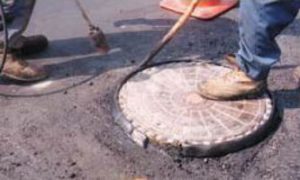 Denso sealing compound works for many construction and maintenance applications
Denso sealing compound works for many construction and maintenance applications
January 22, 2019 REDWIRE is news you can use from leading suppliers. Powered by FRASERS.
Posted by Denso North America Inc
Worldwide Suppliers Of Anti-Corrosion, Waterproofing & Sealing Systems For Pipeline Coatings, Steelwork Protection,... Read more
Subscribe
Free REDWIRE e-newsletter

DensoBand is ideal for bridge repair, parking lots, railways, and airport runways.
For the best lineup of industrial corrosion-prevention and sealing solutions, it is always wise to trust Denso North America. The company’s portfolio includes products for road construction and maintenance, such as the popular DensoBand. This is a sealing compound used for joints in hot asphalt surfaces between asphalt, concrete, and steel.
Among the applications that most commonly use DensoBand are bridge repair, parking lots, railways, and airport runways.
Uniform, watertight, flexible seal
This sealing compound is a polymer modified bitumen strip in rectangular form, manufactured in rolls with a disposable interleaving. Workers generally use DensoBand in conjunction with Denso Primer D. The compound offers a uniform, watertight, and flexible seal that can withstand both asphalt movement and thermal expansion.
Applicable by either hand or machine, DensoBand is maintenance-free once installed. Among its many other advantages are high adhesion strength, high durability, and prevention of cracking and propagation.
To apply this sealing compound, Denso recommends starting off by cleaning and drying the vertical surface of the joint. Then the user should apply Denso Primer D to the vertical face to be joined with a brush or a roller. After the primer has dried to a tack consistency, the DensoBand strip should be laid along the length of the joint, and the interleaving paper should be removed. Then the user heats the surface of the material with a propane torch unit until it develops a glossy sheen.
The next step is to place this side of the material against the asphalt, concrete, or steel joint face, leaving the DensoBand five millimetres (mm) above the face surface, and then press it firmly into place. Then the user installs the hot asphalt in place, raking where required, and then tamps or rolls out the new asphalt to finish the installation. The heat from the hot asphalt will bond and fuse the new surface of the DensoBand’s exposed face.
DensoBand property specifications include the following:
- Thickness: Eight or 15 mm;
- Width: 45 mm;
- Roll lengths: 6.5 or 12 metres; and
- Softening point: Higher than 100 degrees Celsius.
For more information, contact Denso.
Share
Posted by Denso North America Inc
Worldwide Suppliers Of Anti-Corrosion, Waterproofing & Sealing Systems For Pipeline Coatings, Steelwork Protection,... Read more